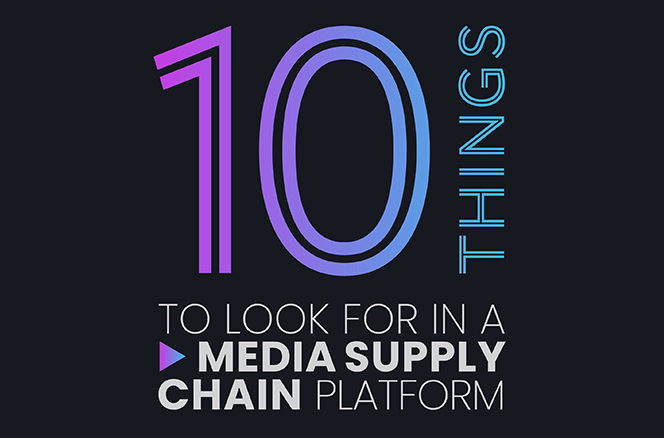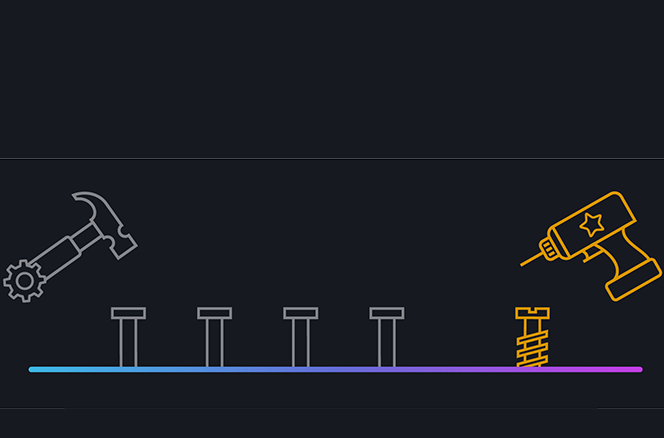No matter how much you automate your media factory, there will always be reasons for manual touchpoints in a media supply chain. Whether to add a vital creative element, bring human intelligence to decision-making and problem-solving, ensure compliance, or distinguish content useful for generating other assets, these manual activities are essential to the overall process of preparing and delivering content that meets the high standards of its target audiences. Doing this work right, with intelligent tools guiding manual efforts, is key to increasing your supply chain capacity.
In one way or another, all of these manual interventions can benefit from some level of automated inspection and analysis, such as using AI tools to identify places where this manual work needs to or can occur. AI-driven analysis of content enables the creation of time-based metadata that in turn can guide the operations of a specific manual task from step to step, making the process more efficient and operators more productive.
Let’s take a closer look at common — often essential — use cases in which manual involvement can be supported and expedited through the application of AI analysis and use of time-based metadata to drive operator interaction.
Expediting Manual Intervention With Time-Based Metadata
Use Case 1: Management by Exception
 The application of AI analysis and time-based metadata yields multiple opportunities to manage by exception — in each instance allowing operatiors to focus on critical high-value work and allow issue-free content to flow through the supply chain. One manage-by-exception model relies on automated QC analysis to detect potential errors so that operators need only step in to review content at points where problems have been identified. Rather than touch every piece of content, the operator simply “jumps” from point to point — each specific instance in time where a problem occurs as identified by time-based metadata created by the automated QC process. The system brings a level of intelligence to manual intervention so that, rather than spend time searching through video for a problem, the operator can move right to the error.
The application of AI analysis and time-based metadata yields multiple opportunities to manage by exception — in each instance allowing operatiors to focus on critical high-value work and allow issue-free content to flow through the supply chain. One manage-by-exception model relies on automated QC analysis to detect potential errors so that operators need only step in to review content at points where problems have been identified. Rather than touch every piece of content, the operator simply “jumps” from point to point — each specific instance in time where a problem occurs as identified by time-based metadata created by the automated QC process. The system brings a level of intelligence to manual intervention so that, rather than spend time searching through video for a problem, the operator can move right to the error.
Use Case 2: Compliance
Reviewing, editing, and modifying content so that it complies with the target destination requirements traditionally has been a time-consuming process. Sometimes this means scanning for content considered inappropriate in different regions and markets (profanity, alcohol, weapons, violence, nudity, etc.), editing for time, or meeting other corporate, political, and cultural requirements. For content being sent off to platforms such as FAST channels, it can also involve inserting or removing network bugs, ad markers, or black bursts. With various AI-based tools analyzing video and audio, logging instances of potentially problematic content, operators can focus their time and attention on resolving compliance issues rather than finding them.
Use Case 3: Subtitling and Audio Dubbing
Subtitling and audio dubbing make it possible to deliver a high quality of culturally relevant content to markets and audiences around the world. While in some instances, AI dubbing is being used as a less-expensive way to get catalog content to new audiences, to quickly build a multi-language library for a regional app launch/expansion, or to get new content to lower-revenue areas, more often the dubbing process is an external creative task involving casting and voice actors. And some media organizations use a hybrid approach, meeting language requirements for distribution deals (or simply enhancing the value of their assets) by craft dubbing the top N languages, and then using AI dubs to fill out the list. In either case, the craft dubbing process must be integrated as seamlessly as possible into the larger media delivery workflow.
Though you may need to pause the supply chain to accommodate creation of unique language tracks, the media supply chain does make it easier to parallelize that effort, sending out multiple jobs with watermarked (or otherwise secured) proxy versions of content to get multiple language tracks completed. As each track is finished, the corresponding version of content can automatically be directed down the supply chain, with automated sync checks ensuring that all elements — audio, video, subtitling/captioning data — are properly aligned.
AI/ML-assisted workflows also improve efficiency in this use case, as automated tools can provide a first pass at transcribing and translating the speech to text, which then only needs a manual review for accuracy, timing, and sentiment/tone. Again, operators can work more quickly because they only need to review the subtitles rather than create them from scratch. The script then can be run through an auto-translate process, followed by manual correction for nomenclature, before the text is sent for voiceover by an actor.
Use Case 4: Asset and Promo Creation
The creation of marketing assets and promos is both creative and mechanical, as it calls for human judgment but can leverage AI to aid in the process. A work order for a film promo, for example, could include AI-generated, time-based metadata pointing to scene changes so that the operator can more quickly look through content to find and extract just the right content for the edit. Rather than spend time scrubbing through video, they can focus on capturing the creative intent of the assignment.
Boosting Productivity Through Work Order Integration
By leveraging automated analysis tools and integrating manual work orders into your automated supply chain, you enable greater efficiency on an individual level and higher throughput across your organization. This shift can completely transform productivity — and for users of our Rally media supply chain platform, it has. Prior to implementing the metadata-driven techniques described earlier, a typical process might require two hours of manual work for every hour of content. Today, in organizations leveraging these techniques, that same operator can go through three hours of content in one hour. That’s a 300% increase in productivity! All enabled by time-based metadata guiding manual actions.
The integration of this work into your supply chain enables further benefits that help you to eliminate bottlenecks and increase throughput. You can more easily parallelize work across a team, and you can better align operator priorities with the priority of content going through your supply chain. As it happens, by empowering operators to get right to the work where they add the most value, you also contribute to higher employee satisfaction and a greater sense of purpose.
With manual and automated aspects of your workflow connected within your media supply chain, your managers gain greater visibility into the work manual operators are doing, where the bottlenecks might be, and which resources being consumed to complete the work. With a more granular understanding —on a per-job basis — of capacity and performance, it become easier to determine if, when, and where additional resources are needed.
Even more important, with manual and creative tasks integrated into the automated media supply chain, and with time-based metadata and intelligent automation guiding operations, you can increase your supply chain capacity and throughput with the resources you have in place. Ultimately, this translates to greater agility and capacity in delivering all the versions of content required to meet consumer demand in today’s media marketplace.
How can SDVI can help your make your operators work more efficient and your media operations more productive? Click here to set up a meeting and let’s start the conversation.



